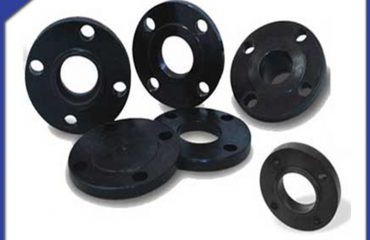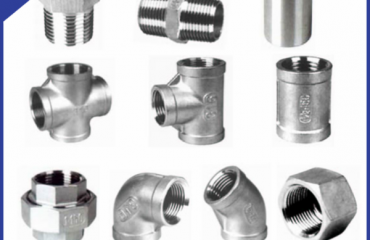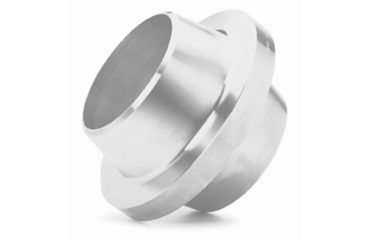
Abstract
This paper comprehensively analyzes whether carbon steel flanges are prone to rusting. It elaborates on the material composition of carbon steel flanges, the mechanism of rust formation, influencing factors, preventive measures, and the comparison with stainless steel flanges in terms of corrosion resistance. The aim is to provide a theoretical basis for the correct selection and use of carbon steel flanges in practical applications.
1. Introduction
Carbon steel flanges are widely used in various industrial fields such as oil and gas, power generation, and chemical engineering. They play a crucial role in connecting pipes, valves, and other equipment, ensuring the normal operation of the pipeline system. However, the issue of whether carbon steel flanges are prone to rusting has always been a concern in practical applications. Rusting not only affects the appearance and performance of carbon steel flanges but also may lead to safety hazards and economic losses. Therefore, it is of great significance to study the rusting problem of carbon steel flanges.
2. Material Composition of Carbon Steel Flanges
Carbon steel flanges are mainly composed of iron and carbon, with a carbon content generally ranging from 0.05% to 2.0%. In addition, they also contain small amounts of other elements such as manganese, silicon, sulfur, and phosphorus. The carbon content has a significant impact on the properties of carbon steel flanges. As the carbon content increases, the strength and hardness of carbon steel flanges increase, while the plasticity, toughness, and weldability decrease. The presence of other elements also affects the performance of carbon steel flanges to some extent. For example, manganese can improve the strength and hardenability of carbon steel, while sulfur and phosphorus are harmful impurities that can reduce the toughness and corrosion resistance of carbon steel.
3. Mechanism of Rust Formation in Carbon Steel Flanges
The rusting of carbon steel flanges is essentially an electrochemical corrosion process. When carbon steel flanges are exposed to the air, the iron atoms on the surface react with oxygen and water molecules in the air to form iron oxide (rust). In this process, iron acts as the anode, losing electrons and being oxidized; oxygen acts as the cathode, obtaining electrons; and water serves as the electrolyte.
4. Influencing Factors on Rusting of Carbon Steel Flanges
4.1 Environmental Factors
4.1.1 Humidity
Humidity is one of the most important factors affecting the rusting of carbon steel flanges. In a high – humidity environment, a continuous water film can form on the surface of carbon steel flanges, providing a necessary medium for electrochemical corrosion. The higher the humidity, the faster the rusting rate of carbon steel flanges. For example, in coastal areas with high humidity, carbon steel flanges are more likely to rust than in arid inland areas.
4.1.2 Temperature
Temperature also has an impact on the rusting of carbon steel flanges. Generally, an increase in temperature can accelerate the rate of chemical reactions, including the rusting reaction of carbon steel flanges. However, when the temperature is too high, the water film on the surface of carbon steel flanges may evaporate, which is not conducive to the occurrence of electrochemical corrosion. But in most practical application environments, the temperature is within a range that can promote rusting.
4.1.3 Pollutants
The presence of pollutants in the environment can also accelerate the rusting of carbon steel flanges. For example, acid rain contains sulfuric acid, nitric acid, and other acidic substances. When carbon steel flanges are exposed to acid rain, the acidic substances will react with the iron on the surface of carbon steel flanges, accelerating the corrosion process. In addition, industrial pollutants such as sulfur dioxide, hydrogen sulfide, and chlorine – containing compounds can also have a corrosive effect on carbon steel flanges.
4.2 Microstructural Factors
4.2.1 Microstructural Defects
The surface of carbon steel flanges may have microstructural defects such as cracks, pores, and inclusions. These defects will become the starting points of corrosion reactions. Once corrosion starts, these defects will accelerate the development of corrosion. For example, cracks can provide channels for the penetration of corrosive media, allowing the corrosive media to reach the internal parts of carbon steel flanges more easily, thus accelerating the corrosion rate.
4.2.2 Grain Boundaries
Grain boundaries in carbon steel flanges have higher energy and are more active than the grain interior. In a corrosive environment, grain boundaries are more likely to be corroded preferentially. The size and distribution of grains also affect the corrosion resistance of carbon steel flanges. Generally, smaller grains can increase the number of grain boundaries, which may increase the corrosion rate to some extent. However, if the grain boundaries are properly treated or alloyed, the corrosion resistance can also be improved.
4.3 Electrochemical Factors
4.3.1 Potential Difference
Carbon steel flanges may have potential differences in different areas due to factors such as material composition inhomogeneity and stress distribution. These potential differences will cause the formation of micro – galvanic cells on the surface of carbon steel flanges. The area with a lower potential will act as the anode and be corroded preferentially, while the area with a higher potential will act as the cathode. This electrochemical effect can accelerate the corrosion rate of carbon steel flanges.
4.3.2 Galvanic Corrosion
When carbon steel flanges are in contact with other metals with different electrode potentials, galvanic corrosion may occur. For example, if carbon steel flanges are connected to copper pipes, due to the difference in electrode potential between carbon steel and copper, carbon steel will act as the anode and be corroded more rapidly, while copper will act as the cathode and be protected.
5. Preventive Measures for Rusting of Carbon Steel Flanges
5.1 Protective Coatings
5.1.1 Galvanization
Galvanization is a common method to prevent the rusting of carbon steel flanges. It involves coating the surface of carbon steel flanges with a layer of zinc. Zinc is more active than iron, so when the galvanized layer is in contact with the air and corrosive media, zinc will be oxidized first, sacrificing itself to protect the underlying iron. Galvanization can effectively extend the service life of carbon steel flanges and improve their corrosion resistance in various environments.
5.1.2 Painting
Painting is also a widely used method. There are various types of paints available, such as epoxy paints, alkyd paints, and polyurethane paints. These paints can form a dense protective film on the surface of carbon steel flanges, isolating the flanges from the air, water, and other corrosive media. Different paints have different corrosion – resistance properties and are suitable for different application environments. For example, epoxy paints have excellent chemical resistance and adhesion, and are suitable for harsh chemical environments; alkyd paints are relatively inexpensive and have good decorative properties, and are often used in general industrial environments.
5.1.3 Powder Coating
Powder coating is a relatively new protective coating method. It involves spraying dry powder paint onto the surface of carbon steel flanges and then curing it at a high temperature. The powder coating forms a thick, uniform, and durable protective layer. Powder – coated carbon steel flanges have good corrosion resistance, wear resistance, and scratch resistance, and are widely used in high – end industrial applications.
5.2 Material Selection and Design Optimization
5.2.1 Selection of Appropriate Carbon Steel Grades
There are different grades of carbon steel, and their corrosion – resistance properties vary. For example, low – carbon steel generally has better corrosion resistance than high – carbon steel. When selecting carbon steel flanges, considering the specific application environment, choosing a carbon steel grade with appropriate corrosion – resistance properties can reduce the risk of rusting. In addition, some alloyed carbon steels, such as those containing a small amount of chromium, nickel, and copper, can also have improved corrosion resistance.
5.2.2 Design Optimization
In the design of carbon steel flanges, factors such as stress distribution, fluid flow, and drainage should be considered. Avoiding areas with concentrated stress can reduce the occurrence of stress – corrosion cracking. Optimizing the design of fluid flow can prevent the accumulation of corrosive media in certain areas. Ensuring good drainage can prevent the retention of water on the surface of carbon steel flanges, thus reducing the possibility of rusting.
5.3 Maintenance and Monitoring
5.3.1 Regular Inspection
Regular inspection of carbon steel flanges is necessary to detect early signs of rusting. Visual inspection can be used to observe whether there are any signs of rust spots, discoloration, or coating damage on the surface of carbon steel flanges. In addition, non – destructive testing methods such as ultrasonic testing, magnetic particle testing, and eddy – current testing can be used to detect internal defects and corrosion conditions of carbon steel flanges.
5.3.2 Maintenance and Repair
Once rusting or damage is detected, timely maintenance and repair should be carried out. If the rusting is mild, the rust can be removed by methods such as sandblasting, wire brushing, and chemical cleaning, and then a new protective coating can be applied. If the rusting is severe or there are serious structural damages, the carbon steel flanges may need to be replaced to ensure the safety and normal operation of the pipeline system.
6. Comparison with Stainless Steel Flanges in Terms of Corrosion Resistance
Stainless steel flanges contain a higher percentage of chromium (at least 10.5%), and often other elements such as nickel and molybdenum. The chromium in stainless steel forms a passive oxide layer on the surface, which provides excellent corrosion resistance. This passive oxide layer is very stable and can self – repair when damaged to a certain extent, effectively preventing the further corrosion of the underlying metal. In contrast, carbon steel flanges do not have such a self – protective passive layer and are more prone to rusting when exposed to the same corrosive environment. Stainless steel flanges are well – suited for applications in environments with high exposure to water, acids, or harsh chemicals, such as in marine, pharmaceutical, and food processing industries. However, carbon steel flanges are more widely used in some applications where corrosion resistance requirements are not extremely high but cost – effectiveness and high – strength requirements are emphasized, such as in some general industrial pipelines and power generation systems.
7. Conclusion
Carbon steel flanges are indeed prone to rusting in the natural environment. The rusting mechanism is mainly electrochemical corrosion, which is affected by environmental factors (such as humidity, temperature, and pollutants), microstructural factors (such as microstructural defects and grain boundaries), and electrochemical factors (such as potential difference and galvanic corrosion). However, through appropriate preventive measures such as applying protective coatings, selecting appropriate carbon steel grades, optimizing design, and regular maintenance and monitoring, the rusting problem of carbon steel flanges can be effectively alleviated. When compared with stainless steel flanges, carbon steel flanges have certain limitations in corrosion resistance but have their own advantages in cost – effectiveness and strength in some applications. In practical engineering, it is necessary to comprehensively consider various factors to select the most suitable flange type to ensure the safe and reliable operation of the pipeline system.
 Language
Language Espanol
Espanol English
English Italian
Italian عربى
عربى
 Skype: chinamaker99
Skype: chinamaker99  Tel: 86-316-5120812
Tel: 86-316-5120812 Email:
Email:  Whatsapp:
Whatsapp: 

